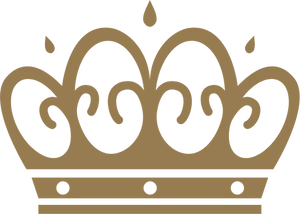Essential Bottle Feeding Items
So you’ve decided that you want to bottle-feed, but you have no idea where to start when shopping for the essentials. Whether you’re at home or on the go, it’s always better to be prepared for your baby’s feeds. This will mean you won’t be spending unnecessary time preparing feeds when your baby is cranky and crying out for a feed – and being prepared will leave you feeling in control and less stressed. We asked Kendamil Feeding Expert Katie Hilton to put together a list of essential items she recommends every new bottle-feeding parent invests in.
- Formula – Before your baby arrives, invest in a supply of formula to keep you going for at least the first month. Research the various formulas available, I would however suggest choosing a formula which is made with whole milk, palm oil and fish oil free.
- Bottles – The bottle will be the container in which you mix your baby’s feed. Keep your bottle sterilised, cleaned and dry well before it’s time to feed your baby. It’s always worthwhile having a couple of bottles ready to go as this will help with preparation time and also means you won’t be running out when you least expect it. You might need to take pre-sterilised bottles into the hospital with you if you intend to bottle-feed – ask your midwife about this when preparing your hospital bag.
- Teats – The teat is what fits onto the top of the bottle and then goes into your baby’s mouth to feed. Teats come in different flow rates, always start with a slow flow teat, progress to a medium flow around 12 weeks of age and then a fast flow teat at around 5-6 months. Keep teats sterilised as part of your bottles and keep an eye out for signs of wear, replacing if necessary.
- Washing Solution – Your baby’s bottles will need to be washed in hot soapy water before sterilising to remove any milk residue. You can use simple dish soap or you can invest in a soap specifically for cleaning baby bottles.
- Bottle Brush – A bottle brush is an essential item to have when cleaning your baby’s bottles prior to sterilizing. These brushes are double-ended with the larger end cleaning the inside of the bottles, whilst the smaller end fits inside the teats. Always be as gentle as possible when cleaning the teats so as not to cause any damage.
- Bottle Drying Rack – This is where you will leave your bottles, teats and accessories after washing in hot soapy water. Keep it nearby the sink and place everything on there after washing. It is best not to use this rack for other utensils in order to prevent accumulation of germs and dirt.
- Steriliser – Your bottles and teats will need to be washed and then sterilized after each feed. There are numerous types of sterilisers available on the market, the most common is either a microwave or electric steam sterilizer. Neither of these require any additional washing solution, the sterilisation process is created through the use of water and convection or electricity. These are both very quick and effective, sterilising everything inside within 5-7 minutes. Be sure to leave individual items inside until you need them and always use the tongs provided to remove before replacing the lid again.
- Burp Cloths – Your baby will need to be burped periodically during each feed and may well bring up a little bit of milk after feeding. Keep burp cloths within reach so you can be ready to catch any milk as it escapes!
- Bibs – You’re going to get through a ton of bibs during your baby’s first year! Keep plenty handy both at home and in your change bag and always put one on your little one before starting any feed.
- Feeding Pillows – A feeding pillow isn’t just for breastfeeding parents, a pillow can help both you and baby to get comfortable during a feed.
- Formula Dispenser – If you need to make bottles when out and about, a formula dispenser will come in very useful. Containing space for 2-3 feeds, they enable you to measure out the correct amount of powder for each feed to have ready to make up feeds when away from home.

